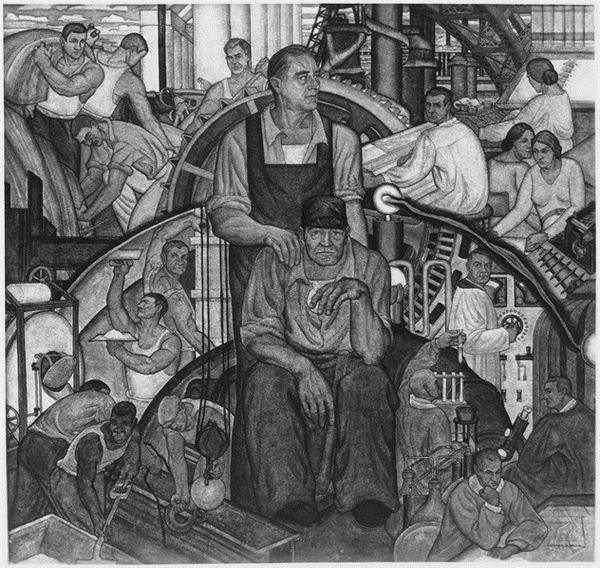The New Deal: High School History Lesson
Franklin Roosevelt’s New Deal was one of the most significant legislative efforts of the twentieth century. It helped shape the modern welfare state and frames part of the current division between the two major American political parties.
Bell Activity: Have students answer the questions “What was the bank holiday? Did it work?” in their journals.
Setting the Stage
After declaring the bank holiday, FDR sent fifteen major pieces of legislation to Congress within the first hundred days of his presidency. All fifteen were passed by senators and congressmen desperate to keep their jobs in the face of the growing catastrophe. Explain that this legislative program, designed to ameliorate or fix different aspects of the Depression, became known as the New Deal.
Jigsaw Activity for New Deal Agencies: This is an activity designed to make students active gatherers of New Deal agencies. The agencies can be used to put together a vocabulary quiz or as part of a end-of-the-unit assessment. A list of agencies can be found here roughly 3/4 of the way down the page: https://en.wikipedia.org/wiki/New_Deal
Depending upon how many students you have in class and their capabilities, you can either assign each student multiple agencies or have groups of students share an agency. The activity runs as follows:
1. Each student or group copies down or creates a workable definition for their agency/agencies.
2. Students are then responsible for finding all of the other agencies represented in the room. They must share with other students to accomplish this. Tell them how many agencies total you expect them to have and set an appropriate time limit to keep them moving.
3. If you wish to extend the activity, add some more time to the clock and require students to have some of the definitions memorized when time is up. Students can work by themselves, in groups, or in pairs to accomplish this.
Relief, Recovery, Reform: Each of the New Deal programs falls into one of three categories: relief, recovery, and reform. Explain what each category roughly means to your students. Relief programs were designed to put money in desperate people’s pockets as soon as possible. Recovery programs were designed to help the economy as a whole bounce back from the Depression. Reform programs were designed to insure that the Depression would never happen again.
Have students categorize each of the agencies that they have information on. Then ask the students which category was the most successful. The answer is that relief was fairly successful, reform somewhat less successful, and recovery was least successful (the Depression would last from 1929-1941).
References
- Image in the Public Domain via Wikimedia Commons: Conrad A. Albrizio. Titled “The New Deal”, dedicated to President Roosevelt.
This post is part of the series: The Great Depression
This unit on the Great Depression is intended for high school students. The lesson plans are designed for a block schedule that has 88 minutes allotted for each class. Modifying them to fit a traditional, shorter period should not be a problem.
